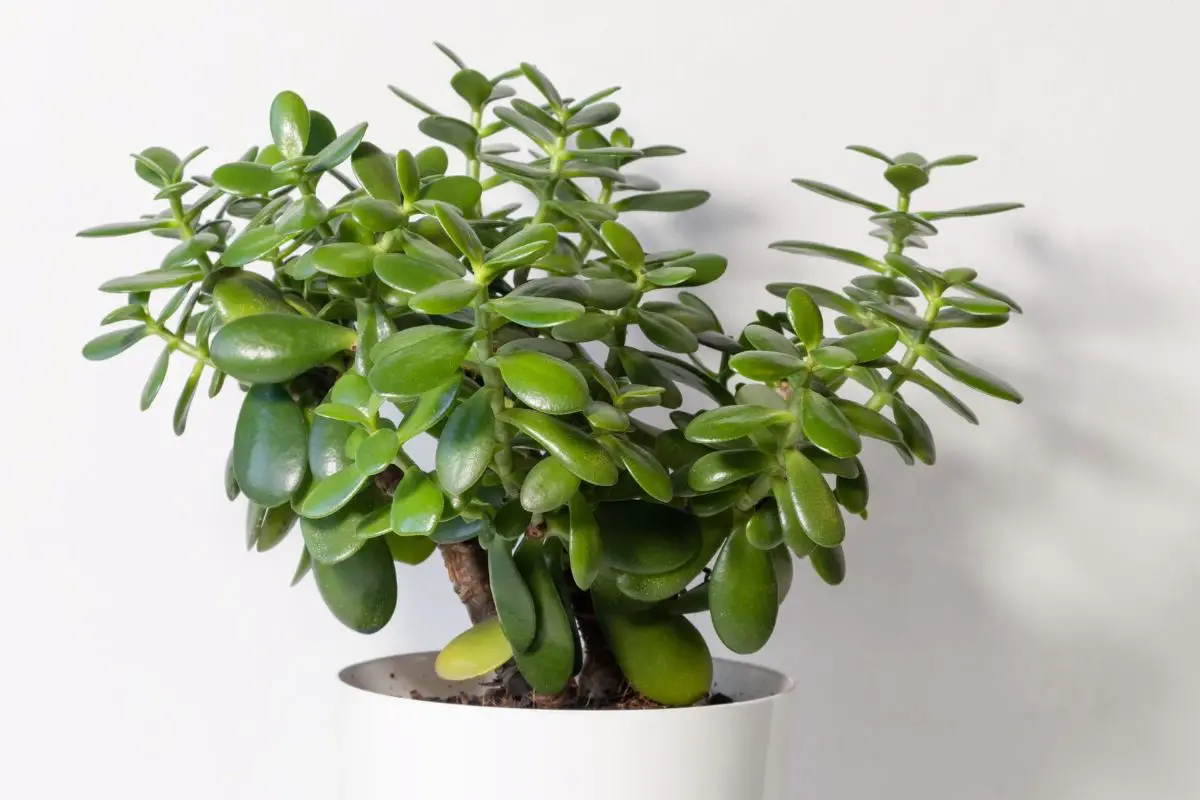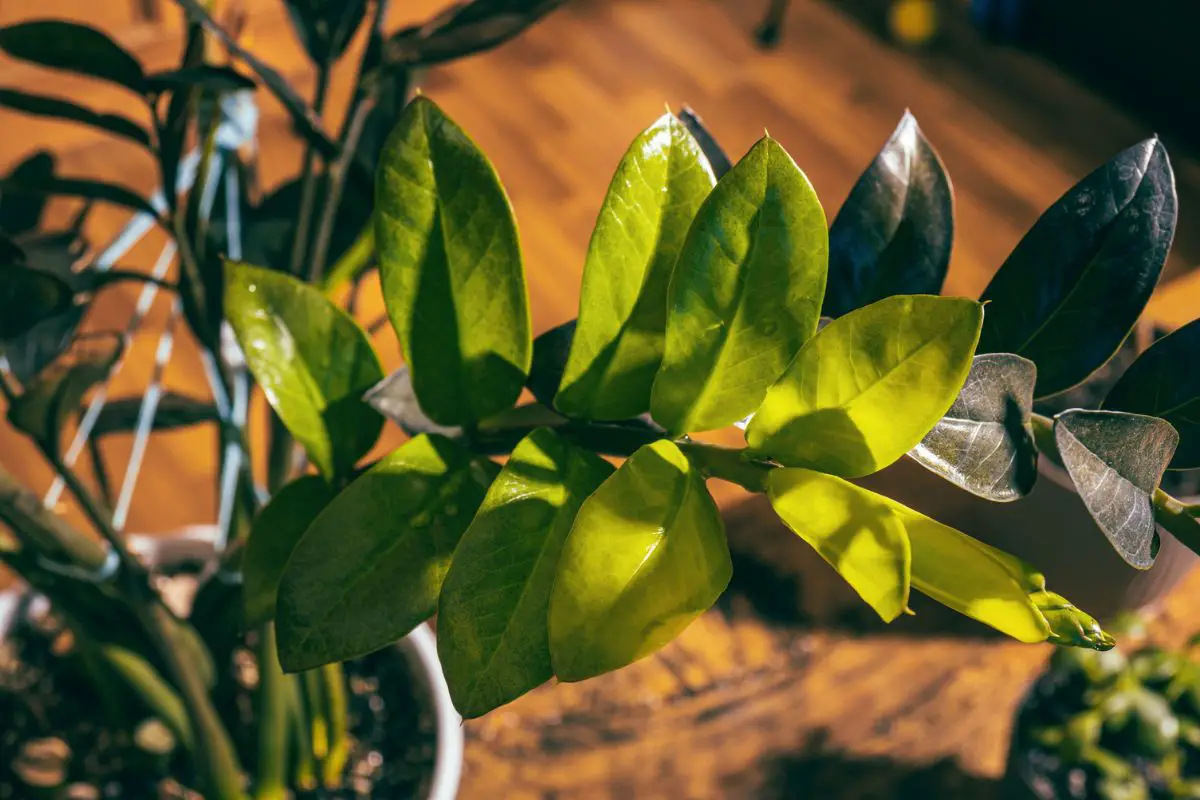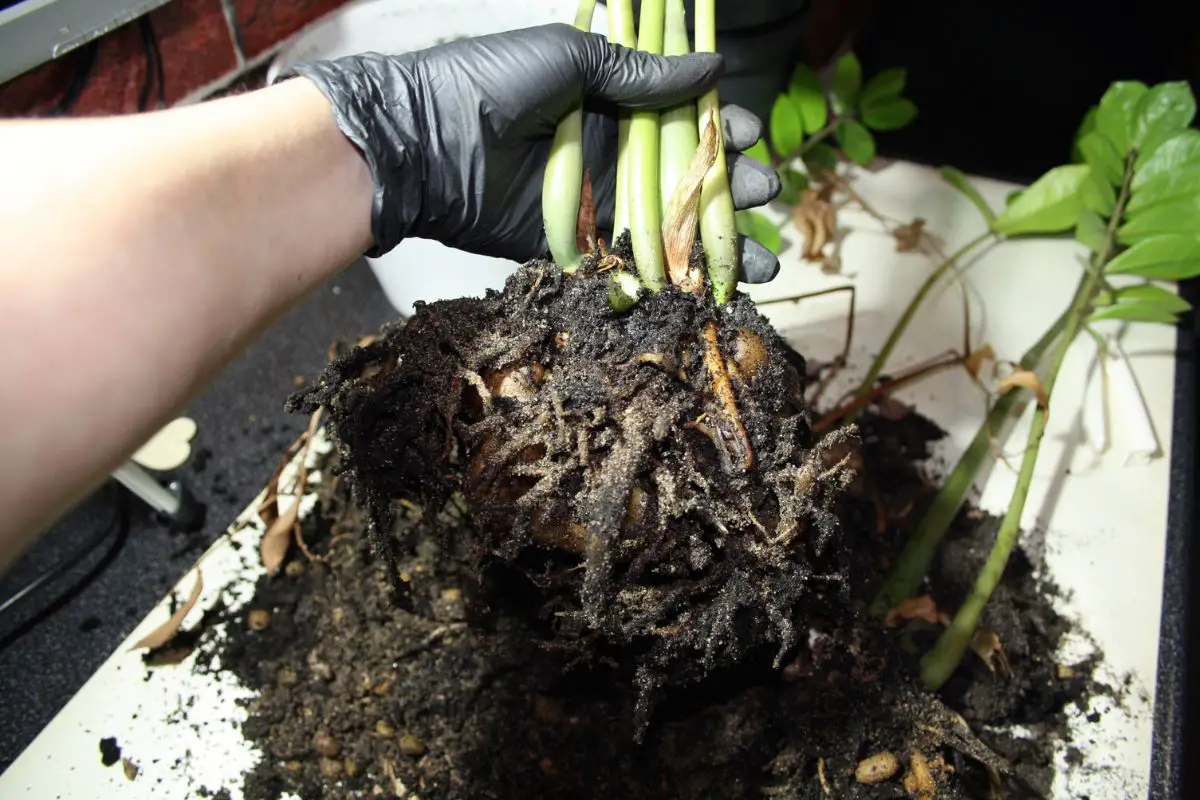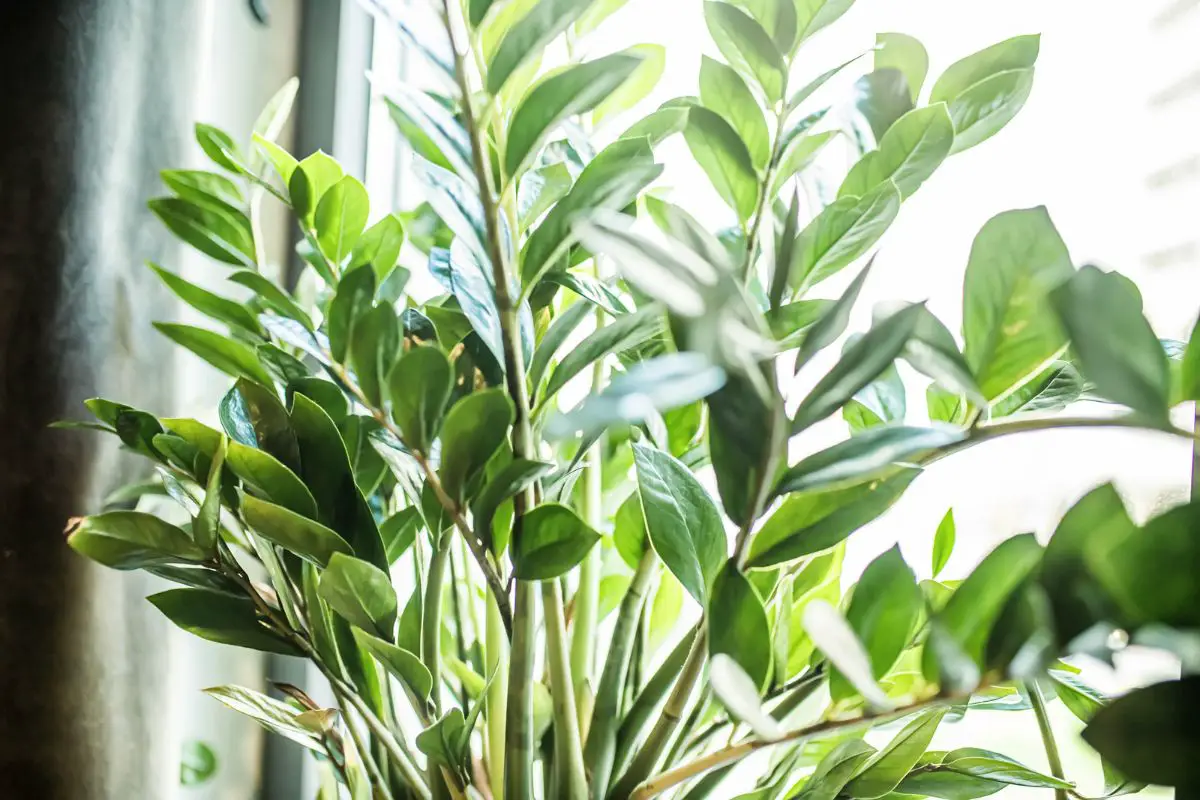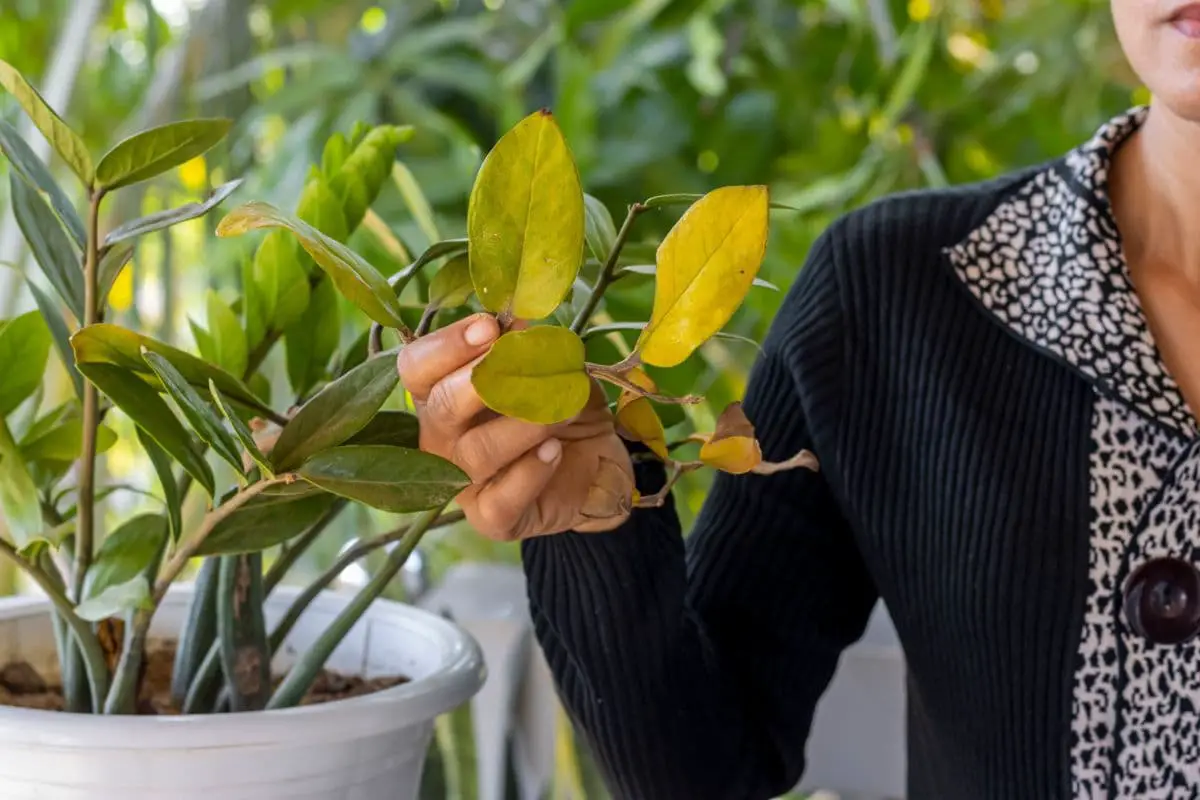Finding honeydew on your plant’s leaves is a telltale sign that some insect pests have been feeding on your plant. This liquid can cause secondary and worse issues by attracting sooty mold fungi. If you can’t find the bugs leaving it behind, it will be difficult to determine the treatment or preventive measures to use.
If there’s honeydew on your plants but no bugs in sight, it’s because beneficial insects like ladybugs have fed on them or the pests are hiding due to extreme temperatures. For instance, aphids die at high temperatures, while mealybugs and whiteflies become inactive during cold weather.
In the rest of the article, I’ll explain what honeydew is and discuss why you sometimes find it on your plants, even without bugs.
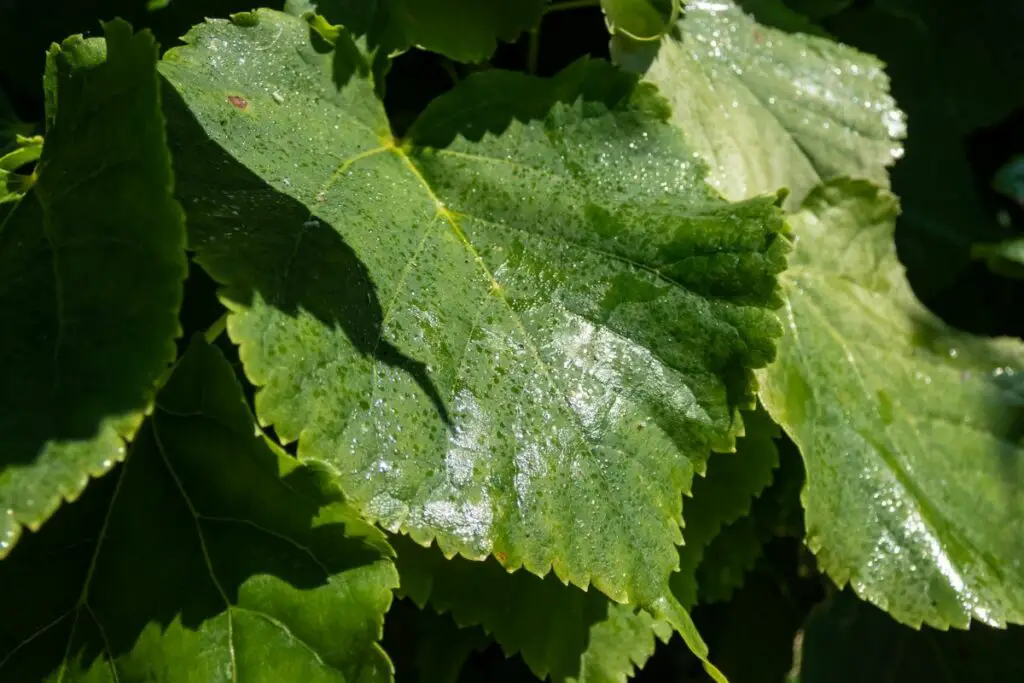
What Is Honeydew?
Honeydew is a sugary, sticky substance produced by common plant pests after they feed on plant sap.
Insect pests that produce honeydew include:
- Aphids
- Mealybugs
- Whiteflies
- Scale insects
Signs and Effects on Plants
Honeydew is a liquid that appears clear, sticky, and shiny when freshly released. It can turn brown or black as sooty mold fungi land on it and spread their dark mycelia. The mycelia will take on the shape of the honeydew droplet and look like soot on the leaf surface, hence the name.
In low levels of infestation, rainfall or morning dew are often enough to wash away honeydew and prevent buildup on the leaves. In severe cases, you’ll see multiple spots or droplets on many leaves.
Honeydew alone doesn’t damage a leaf’s surface but can cause secondary plant health issues.
Here’s how:
- Thick or multiple honeydew droplets can prevent sunlight from passing through, inhibiting photosynthesis. The sooty mold fungi may also spread their mycelium over the leaf surface.
- Honeydew buildup on leaf undersides can block stomata and prevent gas exchange.
- Ants can gather on the plant because of honeydew and aggressively attack beneficial insects like lacewings and ladybugs, protecting the pests. Some ant species were even found to have symbiotic relationships with aphids, which they consider as their food producers.
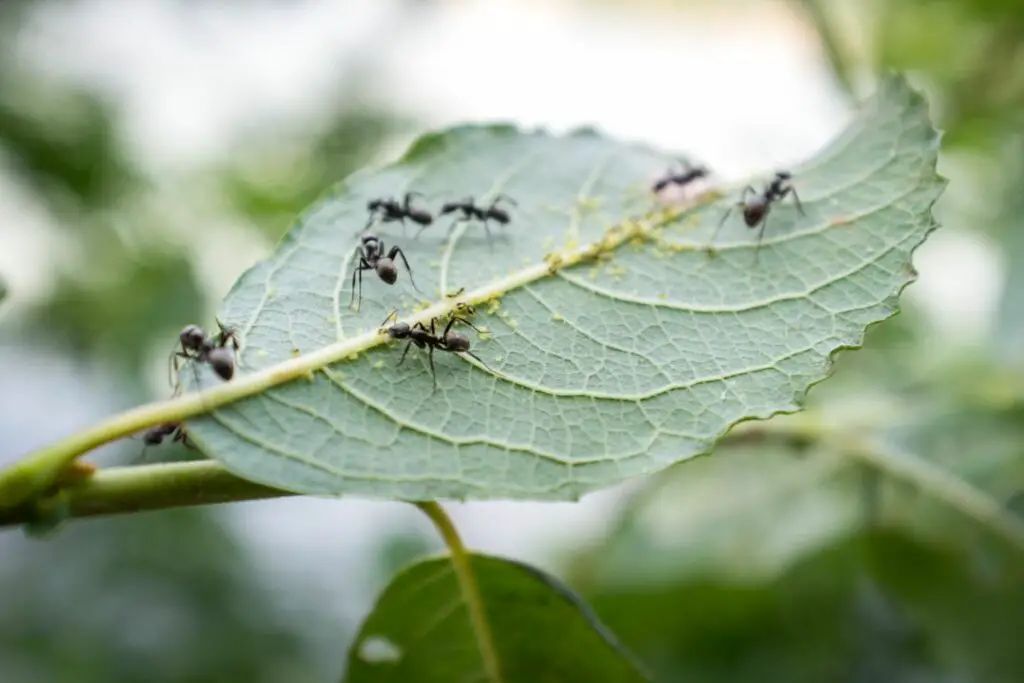
Potential Causes of Honeydew Without Visible Insects
The presence of honeydew on plants is a clear indication of pest infestation. However, several natural and man-made situations can make these pests invisible in your garden.
Let’s take a closer look.
Natural Predators Keep Pest Populations Low
Ladybugs are attracted to the honeydew produced by insect pests. These winged bugs can quickly fly from one plant to another and feed on crawlers like aphids, mealybugs, and scale insects.
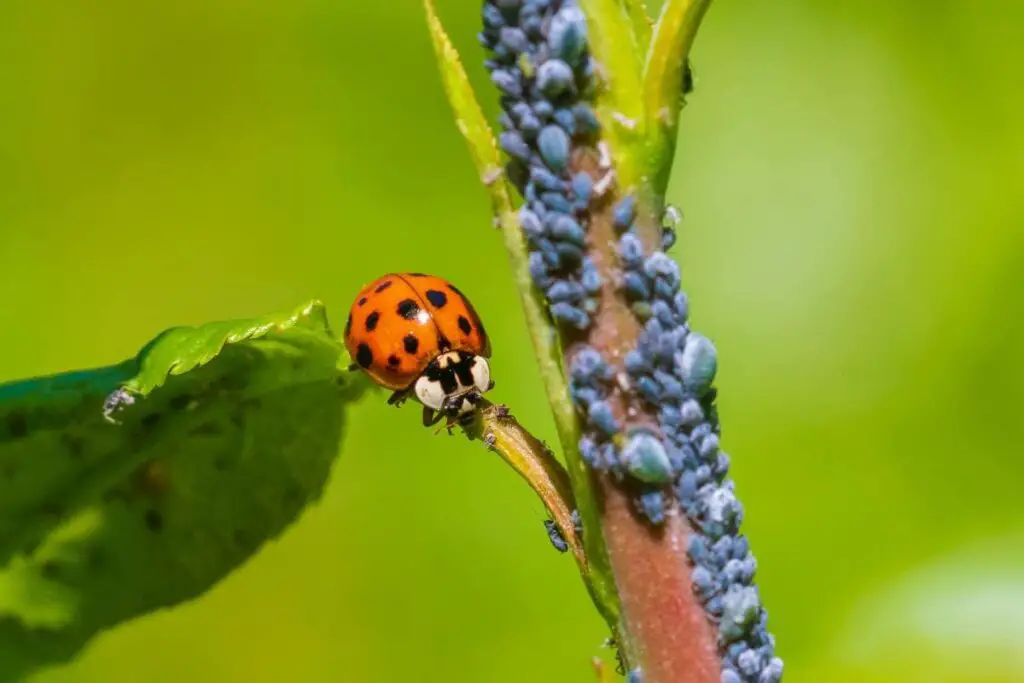
Lacewings also mainly feed on honeydew, but some adults are predatory and prey on aphids.
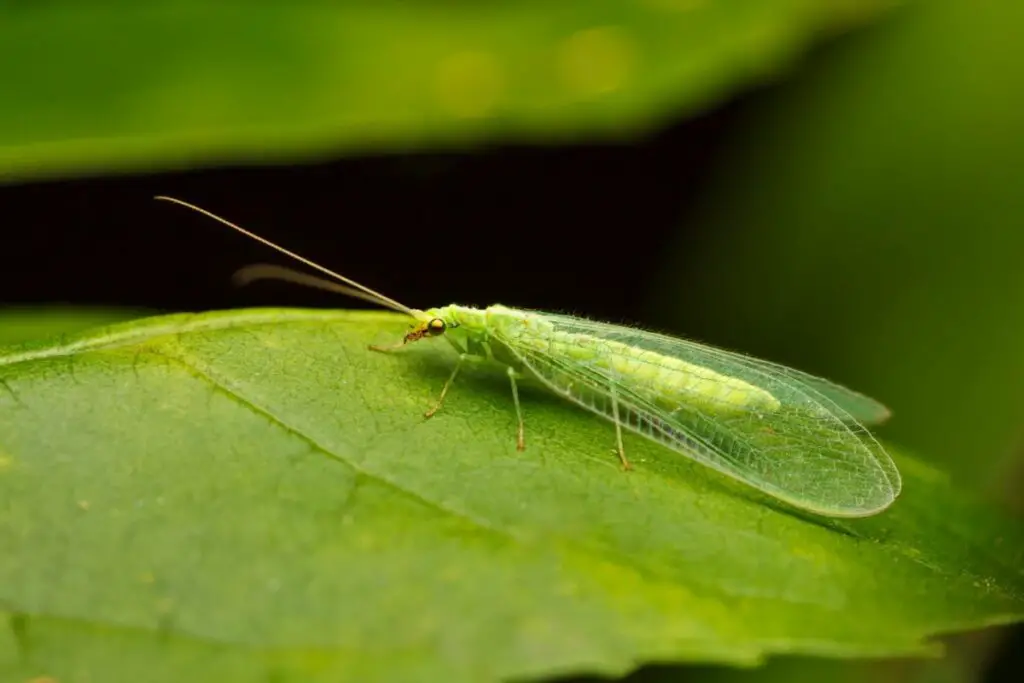
Parasitoid wasps also like honeydew and plant nectar. These helpful insects have a unique way of reducing pest populations. They lay their eggs on common pests like aphids and leaf miners. Once the eggs hatch, the larvae will kill the host.
These beneficial insects can significantly reduce pest populations in your plant. As a result, you may find the leftover honeydew without the bugs responsible for them.
Insects Hide Outside Their Temperature Preferences
Like your garden plants, insect pests also have temperature preferences. Outside their desired temperature range, they become less active or may even die out. To ensure survival, they hide when the weather or season is unsuitable.
I’ll explain this further below:
Aphids
Aphids like cool weather and actively reproduce and grow at temperatures between 68 and 77 °F (20 and 25 °C).
Temperatures over 85 °F (29 °C) are fatal for them, so they hide on the undersides of the leaves during the hottest part of the day. Some will even crawl along the stem and hide underneath larger leaves closer to the ground.
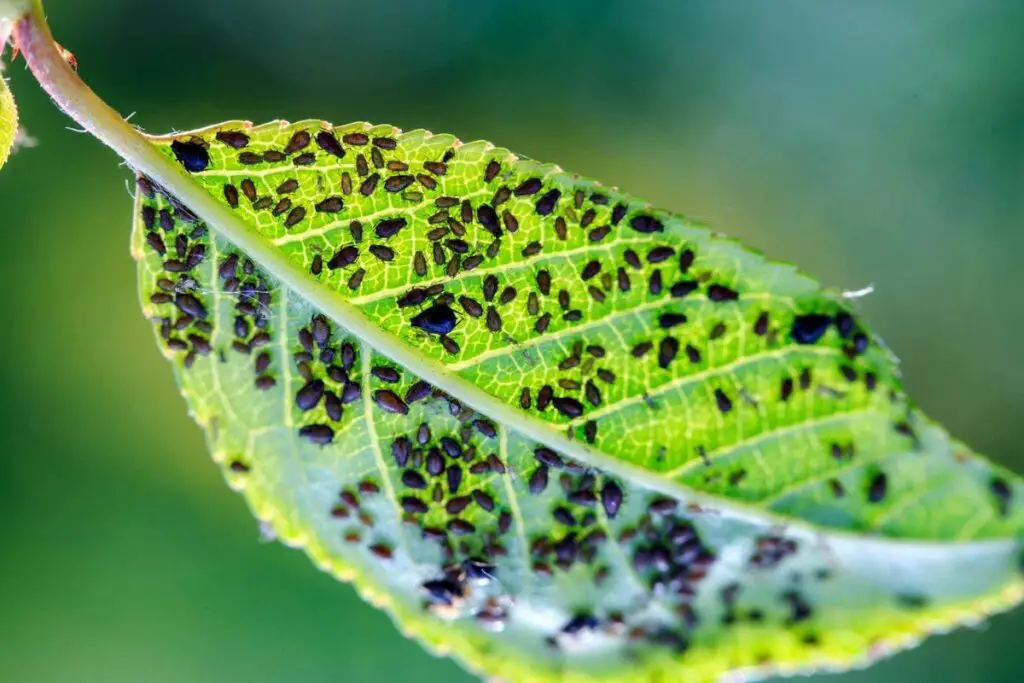
Mealybugs
Mealybugs reproduce and grow most actively during hot weather with the optimum temperature at 86 °F (30 °C). They can’t tolerate cold weather, as their reproductive behavior and growth rate stop at 50 °F (10 °C), so they hide during cold days.
These pests naturally feed on plant parts that are hard to spot without a thorough inspection, such as the base, the stem close to the ground, or between the stem and leaf petioles.
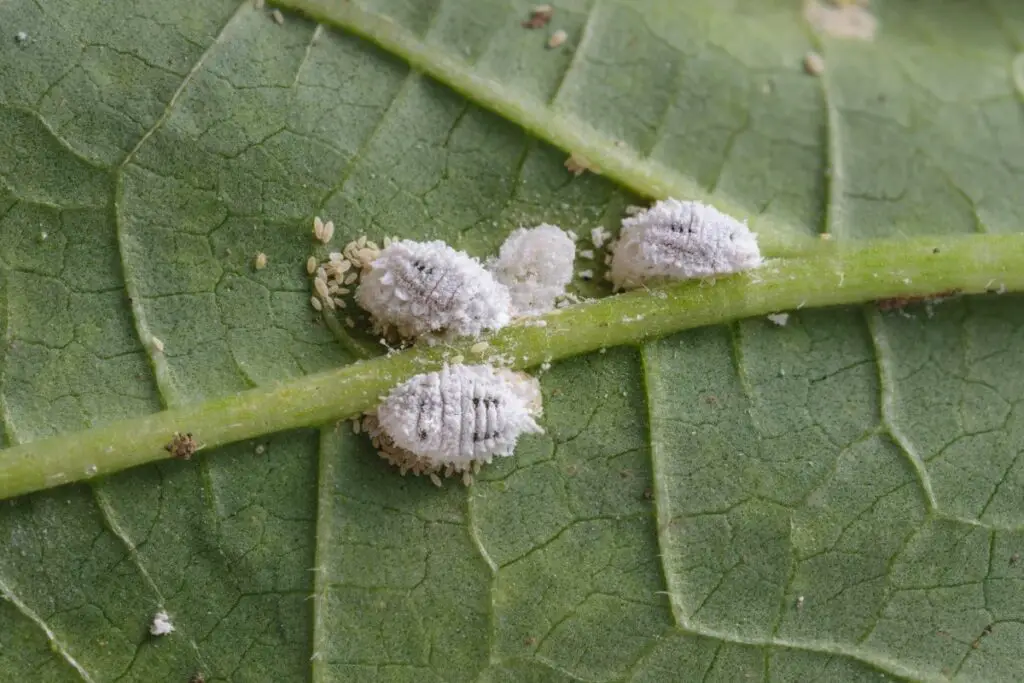
Whiteflies
Similar to mealybugs, whiteflies are not cold-hardy pests. Their reproduction and growth rates stop when temperatures hit below 50 °F (10 °C). They’re also unlikely to survive the winter in regions with below-freezing temperatures.
They can tolerate a wide range of temperatures from 50-90 °F (10-32 °C). These winged pests typically hide underneath the leaves but will fly away when disturbed, making it difficult to spot them.
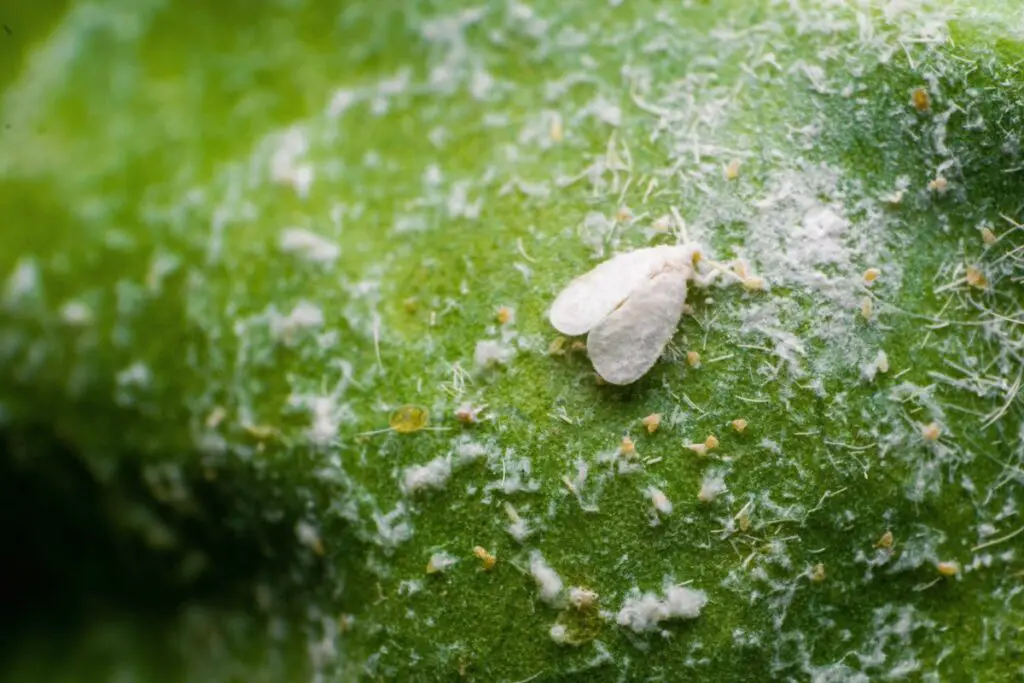
Scale Insects
Scale insects are the hardiest among the honeydew-producing garden pests. They proliferate and grow actively in warm spring to summer months and become inactive in winter. In frost-free regions, they can even produce multiple generations in one year.
These insects have a high survival rate even in below-freezing temperatures if the environment is dry. The winged male may disperse and die out during cold weather, but the female adults will remain attached to the plants in inconspicuous spots.
The mother scale will lay eggs underneath it and protect them from the cold. It can continue laying eggs until spring. The eggs will become dormant and only hatch in spring.
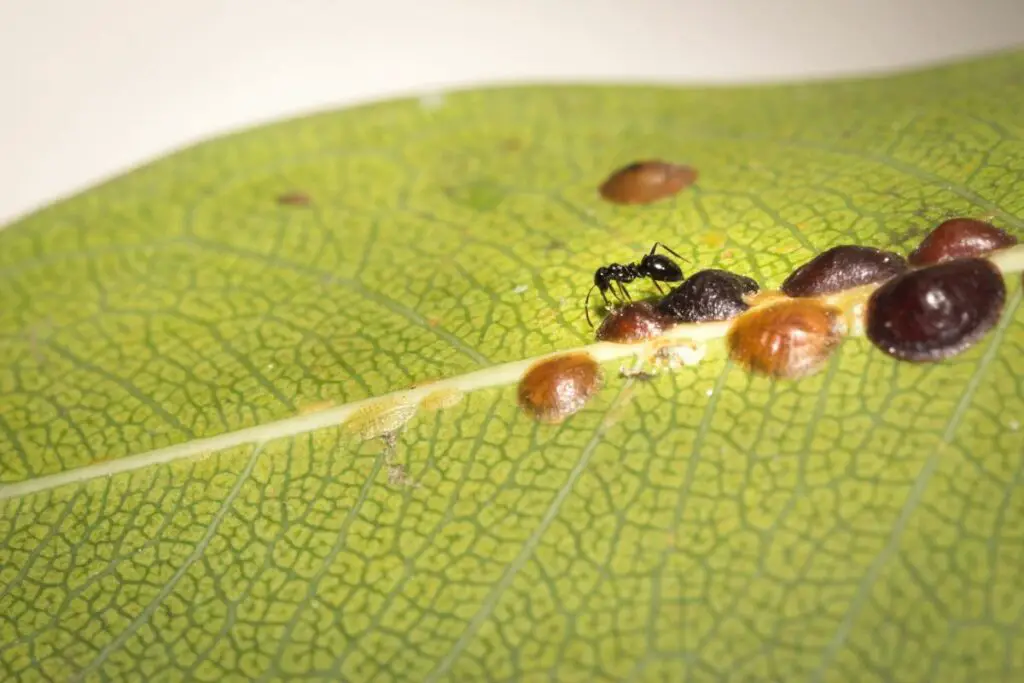
Pests Have Developmental Stages That Are Hard to Spot
Many plant pest species have developed special growth stages that help them blend in with their environment and make them hard to spot for predators.
Here are some developmental stages that may make you believe your plant is bug-free:
- Green aphids have excellent camouflage when hiding underneath the leaves.
- Adult female scale mites are legless and immobile and look like natural stem bumps.
- Adult whiteflies are winged and can quickly abandon a plant when disturbed, making them difficult to catch.
- Whiteflies in the first nymphal stage are tiny, green, and almost invisible unless you use a magnifying glass.
- Adult male mealybugs have wings, are tiny, and live for only a few days. They quickly fly away when disturbed.
Recent Insecticidal Use Wiped Out Pests
If you’ve recently used insecticides, this could be the reason for the absence of bugs in your garden despite the presence of honeydew on plant foliage.
Many insecticides indiscriminately kill insects, including beneficial ones. They can also have residual effects, making your garden uninhabitable by insects for some time.
Guttation Mistaken for Honeydew
Some plants release water droplets through their leaves in a process called guttation. This occurs when the root pressure is strong, but the evaporation rate is low due to high humidity.
The droplets come out from pores called hydathodes, which are located on the tips of leaf veins. The water droplets are mainly located on leaf margins, making them distinct from honeydew, which is spread over the leaf surface.
You can further confirm if the liquid is a product of guttation based on texture. Honeydew is sticky, whereas guttation produces a liquid of watery consistency.
In rare cases, such as with jade plant or money plant (Crassula ovata), the liquid from guttation comes out from the underside of the leaves and feels sticky. Unlike honeydew, the sap turns to fine dust as it dries. When the dust is released into the air within closed rooms, it can cause eye, nose, or skin irritation.
Side note: Guttation is a normal response for some plant species to release extra moisture. For people who are sensitive to jade plant sap or fine dust, you can wipe the sap off the leaves of your houseplants using a clean cloth while wearing a pair of gloves to avoid irritation.
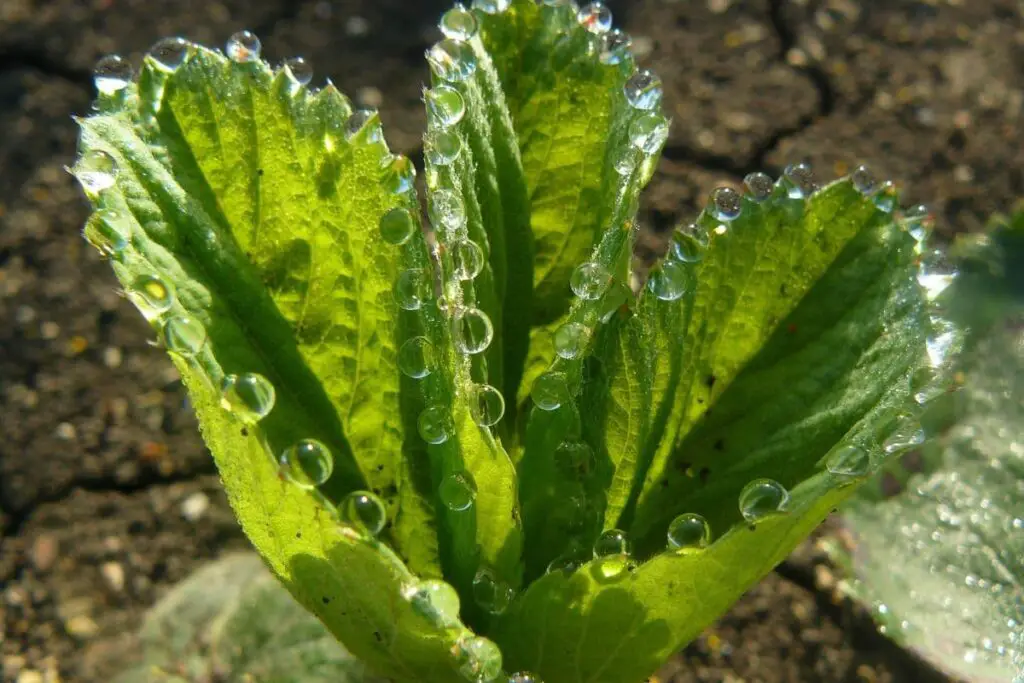
Identifying the Culprits
The presence of honeydew can prove that your plants are attacked by pests, but they can’t tell you what specific insect is responsible for the damage. Inspect the undersides of the leaves because that’s where most of these pests are hiding.
To make it easier to identify them, you can place a white paper plate underneath the plant and shake the stem. You can also pat the leaves over the paper plate to collect some pests for identification.
You can then identify the pests based on their typical appearance and traits:
Aphids
Aphids are tiny winged or non-winged insects. They’re only up to ⅛ inches (3 mm) long and can be pinkish orange, brown, green, or black. The adults form clusters along the stem or leaf petioles. They may also hide on the underside of leaves and lay eggs there.
Mealybugs
Female mealybugs are non-winged pests that are usually white or gray and have a powdery outer layer. Male nymphs produce a cottony cocoon where they emerge as winged adults. The eggs are also coated with a fluffy white covering.
Whiteflies
Whiteflies are yellow-bodied, white-winged insects with a powdery wax coating. The adults are around the same size as aphids. The eggs, on the other hand, are small, white, and oblong and commonly found underneath the leaves.
Scale Insects
Female scale insects are immobile and look like small brown bumps about ¼ inch (6 mm) long on plant stems. Some males look like fluffy white gnats. The eggs are hidden underneath the mother scale. Once hatched, the crawlers come out looking like small yellowish-white or reddish-brown, rapidly moving dots.
Once you have identified the pests responsible for the honeydew, it’ll be easier to choose appropriate treatment methods.
Monitoring and Management
The first thing to do when you find honeydew on your plants is to wipe it off with a clean cloth soaked in warm water. You can add one part alcohol to nine parts water to clean the leaf surface. The sooty mold fungi will disappear along with the honeydew.
Note that regular monitoring can help you manage pest populations and prevent severe damage to your plants. Remove the honeydew as soon as you spot them and deal with the insect pests.
Here are different ways to manage insect pests:
Neem Oil Spray
For crawlers like aphids, mealybugs, and young scale mites, you can use a neem oil spray. These pests move slowly and are vulnerable to liquid sprays that spread on the plant’s surface.
Steps:
- Mix one tablespoon of neem oil, one tablespoon of dish soap, and 0.26 gallons (1 liter) of water.
- Test-spray the solution on one leaf at night and wait 24 hours. If the leaf shows discoloration, dilute the solution further by adding another liter of water. Otherwise, use the solution as is.
- After sunset, spray the plant liberally, targeting the leaf undersides and stems.
- Repeat this weekly until there are no more signs of pests.
Yellow Sticky Traps
You can lure flying pests and catch them using yellow sticky traps. Tape the traps on a wooden stick and drive the stick into the soil, careful not to damage plant roots. Check the trap regularly and replace it if it’s overridden with pests.
Alternatively, you can place the traps on the soil below the plant and give the stem a little shake so the crawlers will fall on them.
You can also scrape the hard-shelled adult female scale mites using the blunt end of a knife or scissors until they all fall onto the sticky trap. Just be careful not to wound the plant in the process.
Insecticidal Soap
Commercially available insecticidal soaps are specially formulated to be effective against soft-bodied pests without any residual effects that can harm beneficial insects. This chemical works on contact by melting away the pest’s waxy coat and breaking down their cells.
Instead of liberally spraying your plant with the liquid, focus on areas where pests and their eggs gather, such as the leaf undersides and stem and petiole junctions.
Apply the solution once weekly, ideally after sunset or before sunrise, to maximize contact with pests. As discussed, the soap doesn’t have a residual effect and is only effective when wet.
Preventing Future Infestations
To prevent future pest infestations, you can use any or a combination of the tips below:
- Continue using the neem oil spray every two weeks. This solution is effective in preventing common plant pests and fungal diseases.
- Place sticky traps around your plants even if you don’t see bugs flying around. The only downside with this method is that even beneficial insects like bees and ladybugs might get drawn to the traps.
- Inspect your plants regularly. You can do it every time you water your plant so you don’t forget. Once it becomes a habit, it will be easier to maintain.
When to Seek Professional Help
Low levels of infestation aren’t enough to kill off mature plants. However, severe infestation can damage multiple plants in your garden because these pests can jump from one plant to another. It’s crucial to deal with the issue before it gets out of control.
One sign that it can be beyond your DIY interventions is if multiple plants are showing signs of insect infestations and are dying out. That means that the pest population is so widespread that it isn’t practical to use the treatment and preventive measures discussed above.
It is also dangerous to use commercial and farm-grade insecticides because they can harm the local bee population. In that case, it’s best to contact the local pest control expert to deal with these pests before they spread to the whole garden or neighborhood.
Final Thoughts
The presence of honeydew on plant leaves is a definitive sign that pests like aphids, mealybugs, whiteflies, and scale mites have fed on your plant.
If you can’t find these bugs around, it could be because they’re hiding, have been eaten by predatory insects, or have been eradicated by previous insecticidal activities.
Inspect the undersides of the leaves and the stems to confirm if there are bugs and remove them using neem oil spray or insecticidal soap. Monitor your plants regularly to keep the pest population in check.

